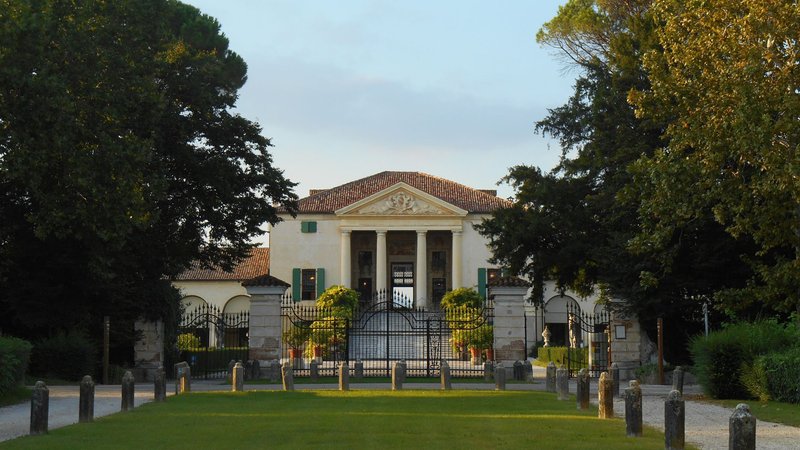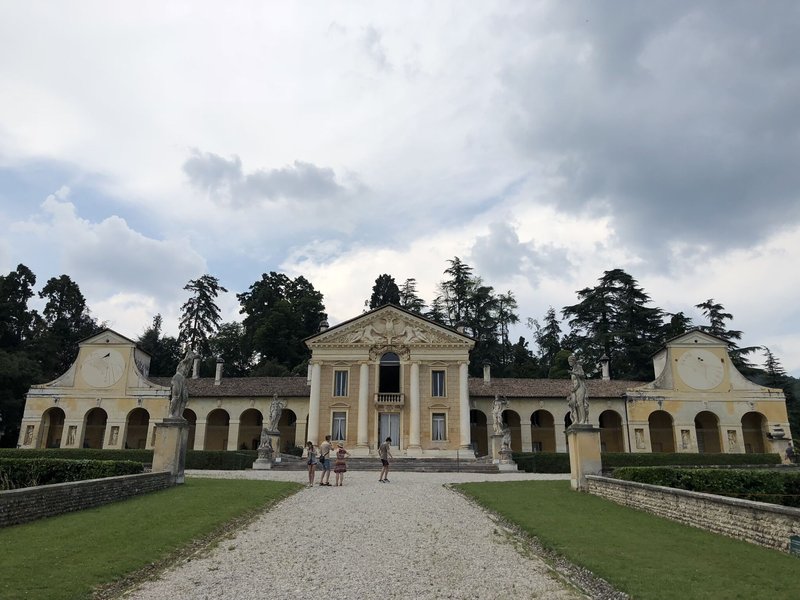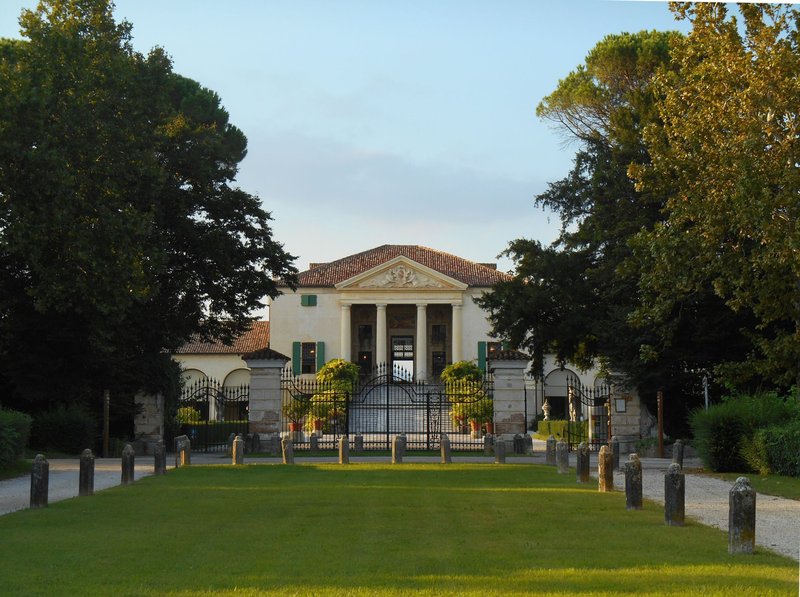Let's discover the three Palladian Villas in Treviso. A cooperation with Around & About Treviso - 7
- July 20, 2018

ELENA
I hope that you are enjoying your summer to the most! Here in the North, it is the hottest summer of the last 130 years, somebody says. If I was in Treviso now, I would take a trip on the trail of the Italian architect Andrea Palladio for sure. Not only I recommend you to visit Vicenza, where you will find a lot designed by him, but also to explore the Villas, scattered all around Veneto region. In this article, three of them are set out, but there are many more you could pay a visit to! Enjoy the reading and see you again in September!
VALENTINAAround & About Treviso:
The Palladian Villas, spreaded all over the Veneto region, are listed in the UNESCO World Heritage Sites since 1996. The Palladian Villas were built after the second half of the 15th century thanks to the Italian architect Andrea Palladio. At that time the noble Venetians wanted to get away from the sometimes unhealthy city life and to take refuge in the countryside. Three of the twenty-four Villas which were designed by Palladio are located in the Treviso province. Among them, two can be visited: Villa Barbaro and Villa Emo, the other, Villa Zeno, can only be visited after prior agreement with the owners.
Villa Barbaro in Maser is a masterpiece of architecture situated on the slopes of the Asolo hills. It was built between 1554 and 1560, when the noble Venetian family commissioned Palladio to restore their medieval house. For the first time the manor house, namely the central body reserved for the nobility as a place of representation, is aligned in a single unit with the barns ("barchesse") intended for servants. The reasons are probably due to pre-existing medieval structure and the fact that Villa Barbaro is located on the slopes of the hills. The interior is embellished by six rooms beautifully decorated with frescoes by the Italian artist Paolo Veronese, while next to the Villa, Palladio realized the Tempietto with circular floor in 1580. The orderer Marcantonio Barbaro wanted to donate a new church to the town of Maser. The very last masterpiece before the architect's death. If you walk along the path on the back of the Villa, you will reach the Carriage Collection, which deals with about thirty antique pieces. Never forget to take a look at the opening hours on the website before paying a visit.

Photo credits: Valentina Facchin. All rights reserved.
Villa Emo in Fanzolo was commissioned to Palladio by Leonardo Emo around 1550 since he wished to make a plan for his country house, as he was willing to leave the city and devote himself to agriculture and farming. Palladio planned these mansions based on usage and the need for which they were commissioned. In this case he planned a noble center, which could be developed on one or two floors, from which it could also be particularly effective the control of the farmers work. While on the sides the barns took shape, which had to be symmetrical and facing the south, according to Palladio. Even in this case the barns were nothing more than the workplace for the farmers. They were separated from the noble part this way. The frescoes by Battista Zelotti, Veronese’s partner and collaborator already by that time, enhance the architectural harmony of the Villa. My favorite room is the Hall of Arts, in which the muses of music, poetry, architecture and astronomy are represented. A curiosity: Villa Emo no longer belongs to the original family. The only thing they still own is the coat of arms hanged in the main hall. After the visit, bare in mind to keep the ticket, as you will get a discount to visit four other nearby sites within a year: Museo Casa Giorgione, Museo Civico di Asolo, Villa Barbaro in Maser and Canova’s Plaster Cast Gallery.

Photo credits: Valentina Facchin. All rights reserved.
Villa Zeno in Cessalto is perhaps the less known Palladian Villa, dating back probably to 1554 by the will of Marco Zeno. In "The Four Books of Architecture" by Andrea Palladio, the Villa is represented with four barns, whose construction only took place in the 1600s. It is highly probable that Palladio realized Villa Zeno on a pre-existing building. This would explain the particularity of the plant, which has undergone important changes over the centuries. Currently the Villa, listed in the Unesco World Heritage Sites, needs restoration works for which it is not regularly open to the public. You can still visit it by making direct contact with the owners.

Photo credits: Alessandro Facchin. All rights reserved.
Here a link for you to the map of the Palladian Villas in Treviso.